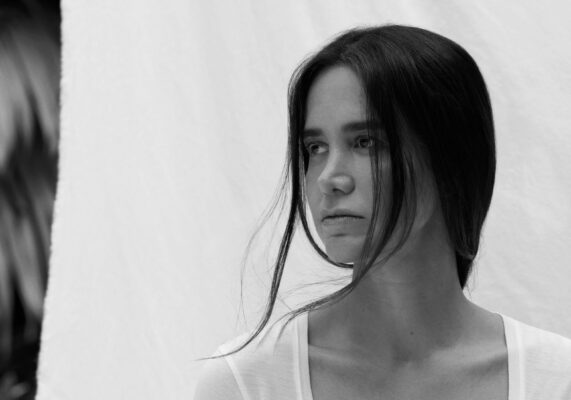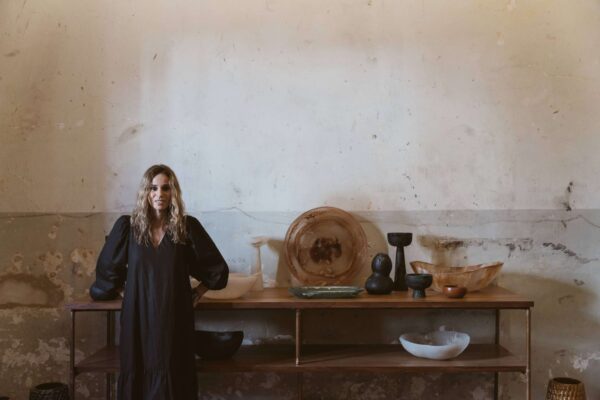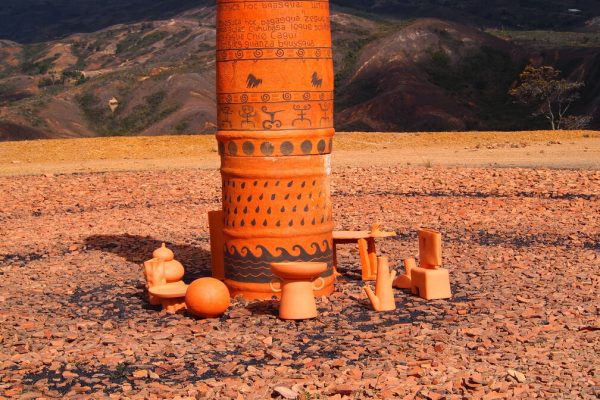
Francisco Costa.
COFFEE WITH
FRANCISCO COSTA: “YOU HAVE TO PROVE NOTHING, BUT YOU HAVE TO HAVE THE BIGGEST DREAM”
Name: Francisco Costa
Profession: Designer
Nationality: Brazil
Zodiac sign: Taurus
Instagram: @costafrancisco
LATINNESS: Francisco, you just launched a new project which we’re excited to talk to you about, but first, we want to understand where this all started. Your journey from Brazil to New York is remarkable. Your first experiences in fashion were with some of the greatest names, such as Oscar de la Renta and Tom Ford, but is it true that when you moved to New York, you didn’t even speak English? I understand you would study English during the day and take classes at FIT (Fashion Institute of Technology) at night. What was that like?
FRANCISCO: You just brought up memories here! When you are young, you have this young entrepreneur, really free spirit and nothing fazes you. That’s how I felt when I moved here in 1985, but I consider myself very lucky because while I was at it, there was this very interesting moment that happened, when I was reading a bulletin board and there was this event happening within the school where 15 students were to be chosen to go to Italy on an internship. This was like six months into me having moved to the US. I briefly understood the gist of the thing, but I really didn’t understand in depth. Nevertheless, I felt compelled to submit some design sketches and a portfolio to the management of this contest. Next thing, I got a call from FIT saying that they couldn’t identify me as a daytime student.
They said “You are continuing ed, and this program is only open to daytime students.” So I said, “Oh, I’m sorry, it could have been something great, but thank you very much”. Then, they called me back and said they opened this space for me with the 14 other students from the daytime program.
That’s why I consider myself very lucky, because, of course, I took a chance. I opened up a space for myself to be part of that team. I went to Italy and spent two months working in a couple of manufacturers learning about textiles, which is really my passion. That was something quite special for me in my career. I began to understand and acknowledge how much textile is fundamental to my work and how much I loved it.
I came back to the US. The contest was ongoing, and I ended up being one of the winners, which was great because I got a scholarship to actually finish FIT, the fashion design program during the day. So we expedited my graduation, which I really never did. I kind of abandoned that a little bit right after I got my first job on Seventh Avenue, simultaneously.
That was the beginning of it all. It really has been a wonderful journey. I couldn’t be more thankful to everyone that crossed my way to help me and who gave support.
LATINNESS: Then you landed a coveted role as Creative Director at Calvin Klein, taking over the role from Calvin himself. Your new project, 555: Revisiting The Fashion Archive of Francisco Costa is an homage to the work you created over those 13 years. What sparked this idea
FRANCISCO: Yes, that brings us to the very long years after I joined Calvin Klein for 13 years.
I never had the intention of putting a book together– I don’t love looking back. I love to acknowledge the past and always have fond memories of the past, but I always think of how to engage the future. The sensation that I had by going to visit the archives during the pandemic, at that particular period of time, was exactly that. I looked at the clothes and was like, “Wow, great! But so sad to see this sitting here. Why is this sitting here?” It just felt like a waste.
I came home and thought maybe I should approach PVH, which is the company who owns Calvin Klein, and challenge them to do something together with it, like an exhibit or maybe a book. Because then I would see the motion, like heavy air breathing into your veins all over again. It was the only way I could see the value of even looking back or appreciating the archive in such a way that’s really looking forward.
I was thinking of whether to invite some friends to shoot or contract major photographers, but it didn’t take much for me to realize that the less institutional way to really celebrate the past in that sense was to engage the future artists that I love and got to work with, or that I admire right now.
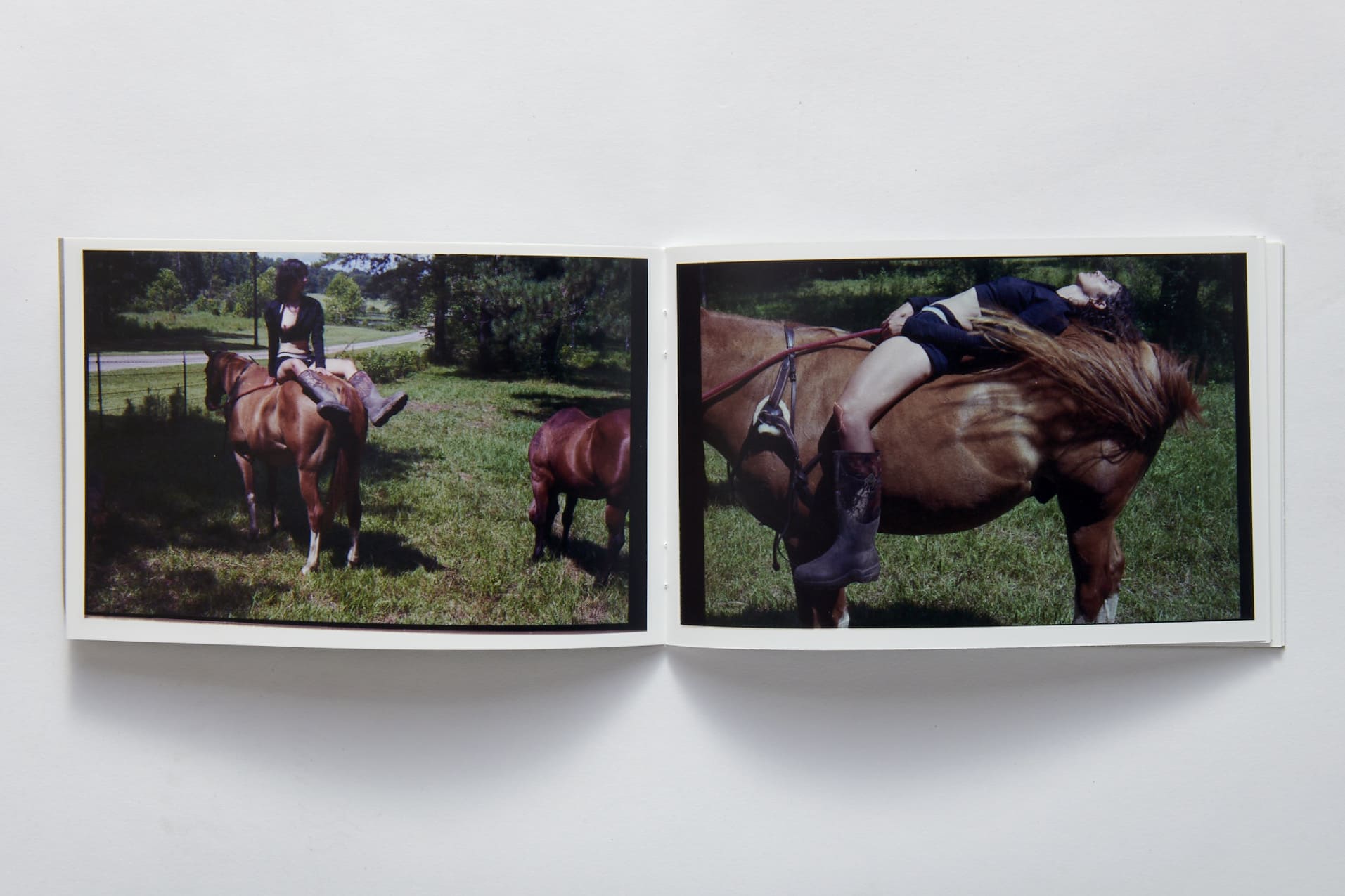
‘555: Revisiting The Fashion Archive of Francisco Costa’ Section I shot by Diego Villareal.
LATINNESS: Several creatives collaborated with you on this project. Was there a criteria when choosing them?
FRANCISCO: I called Collier Shorr, who was an incredible talent. I adore Collier, everything she does, and I never really got to work with her while at Calvin. So, I told her “I’d love to do a book. It’s not really a book. I don’t know what it is, but can you just shoot some of my archive, and we go from there? Maybe we’ll do an exhibit. Maybe we’ll sell prints for Conservation International. I want this to be as free as possible. You have the freedom to shoot on your cats, on your mother, on your tree in the backyard. I’m not interested in the fashion aspect of it, but in the longevity in which the clothes could come through your eyes.”
This is basically what I told every single one of the collaborators. I called Diego Villareal, who I was working with already with Costa Brazil. Again, “You can do it with anyone…” He ended up shooting his sister, who is wonderful, gorgeous, and they shot in their home in Alabama that has a really beautiful view and really speaks of nature, which I love.
Collier chose to go to LA and shoot with the Getty kids. They have this passion for fashion, and when you see them wearing the clothes– you know, we’re talking about a 15 year old archive– all of the sudden, the clothes are just so alive. They’re so today, so tomorrow, and that really excited me.
I started calling one by one. This was during the pandemic, and there were all these limitations, right? I couldn’t put a time on this project. I couldn’t say ”Okay, you have to shoot by tomorrow, or I’m sending the clothes to you next week”. Everything was really lethargic, very different from your normal sort of operation. The process, in that sense, was really great.
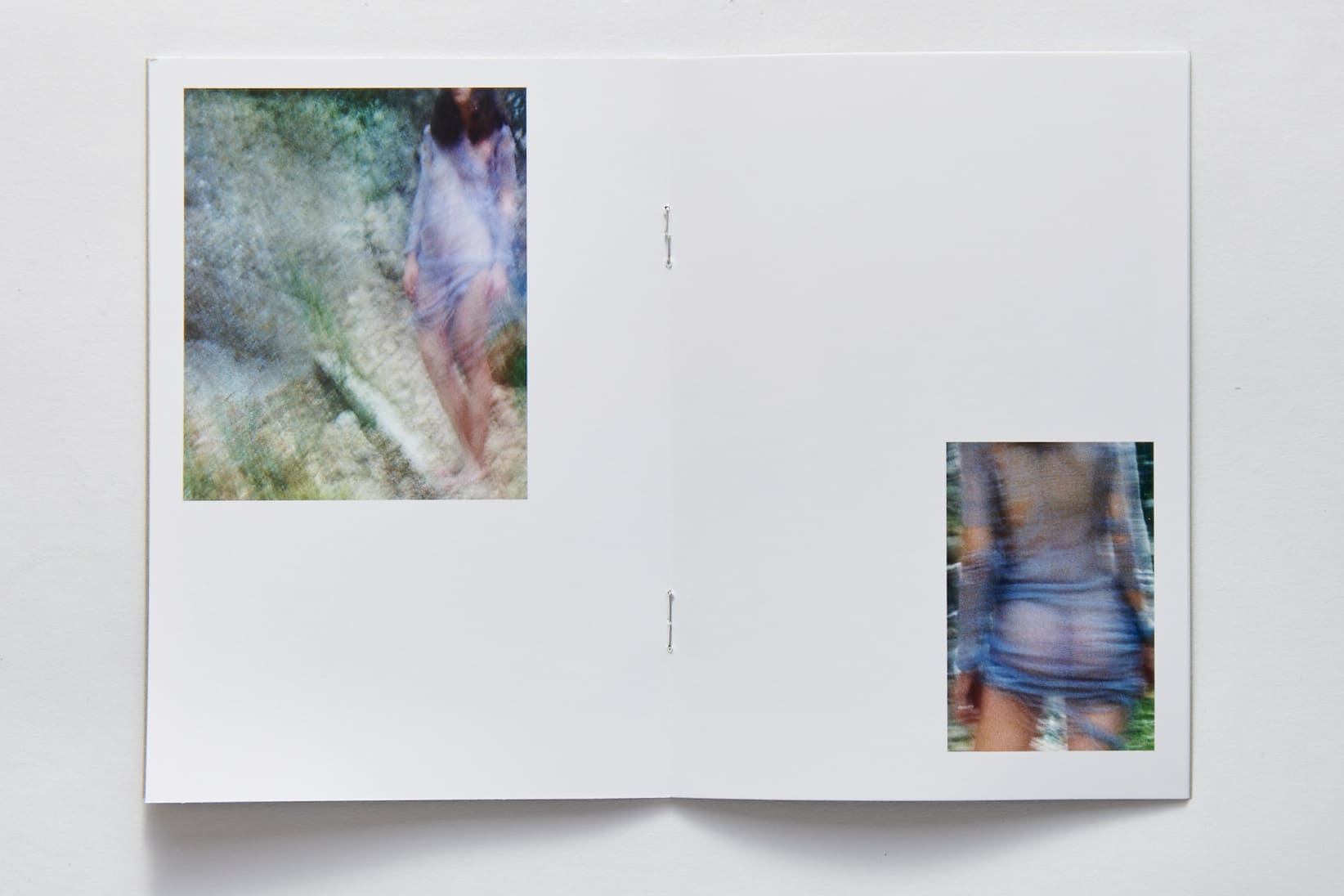
‘555: Revisiting The Fashion Archive of Francisco Costa’ Section II shot by Marcelo Gomes.
I managed to go to Paris towards the end of the pandemic and met with a very talented Brazilian photographer, Marcelo Gomez, and I said ”Marcelo, I have this one dress on my suitcase. Would you mind shooting it?” Marcelo is a painter and he photographs like his painting. He shot the one dress, and it’s the most gorgeous shoot, very textural and very layered. It’s just wonderful.
LATINNESS: It sounds like the dream project for any creative in the fashion industry– to be given so much freedom.
FRANCISCO: Yes, the first photographer we sent clothes to was Brian Liston. He was taking a trip with his girlfriend in upstate New York, and ended up in this waterfall that was absolutely frozen. The image is iconic with ice from the bottom to ceiling of the picture, embracing the beauty of nature and making the clothes just so special, so gorgeous. They’re lost in nature, in this glacier with drops of ice throughout. This is the most beautiful thing. And never even gave up. He delivered this, and kept going, kept traveling. We later got a second shot from a completely different location.
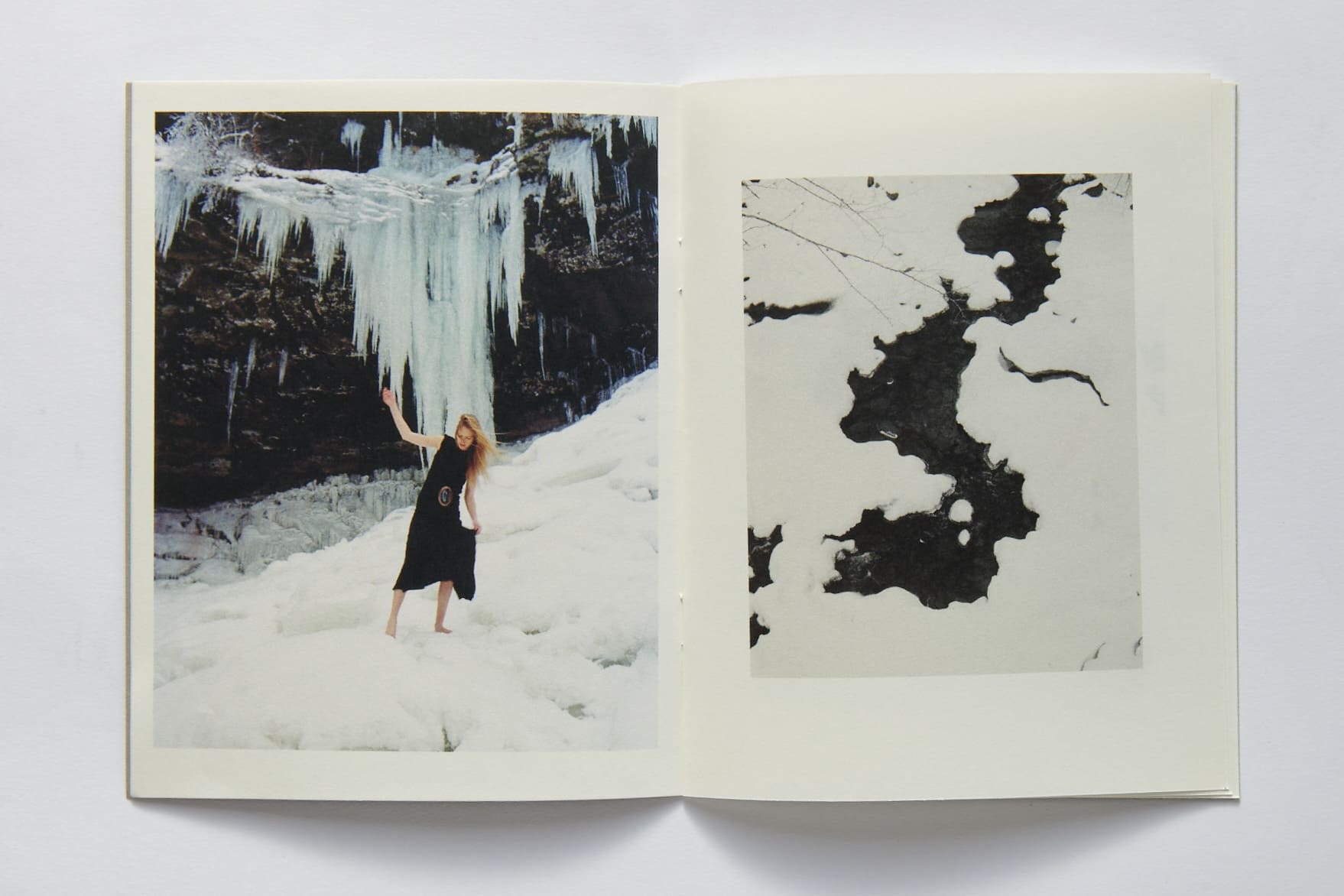
Brian Liston for ‘555: Revisiting The Fashion Archive of Francisco Costa’.
I am telling this to illustrate that the project was really an open conversation. It was a real, honest approach into what we believed the clothes should have been photographed at one point in its life. When I did those collections, I always imagined the clothes being free, being what they were, with gorgeous construction and timeless. At times I saw myself framed in situations that weren’t timeless. They were very constructed to please a marketing stunt.
We sold to so many places, we had two campaigns that were more designed for the European market and others for the Asian markets, naturally, and the correct way to do it, but it was never the correct way for me. The clothes, to me, would have felt so much more natural in nature, in the very day to day environment.
This book represents that. It’s kind of me breaking the knots with the past, and really engaging with the future. Having the eye of every artist telling their story using the clothes as a common point. I think it really did work out so well because how many artists get the collections that they shoot every season, and it’s quite designed, you know? “You have to shoot in this way. This is what it wants to be…” Usually there’s like 10 people in the room, everyone has an opinion and all the pieces have to be valid, etc. So you end up with campaigns that are very egotistical.
With this project, every single one of the artists that contributed had everything to say about that shoot and how they envisioned it. I wasn’t telling them that you have to do this, this and that. The only expression I made was that it needed to be real, needed to be simple, engaging with nature to some extent. I think we succeeded.
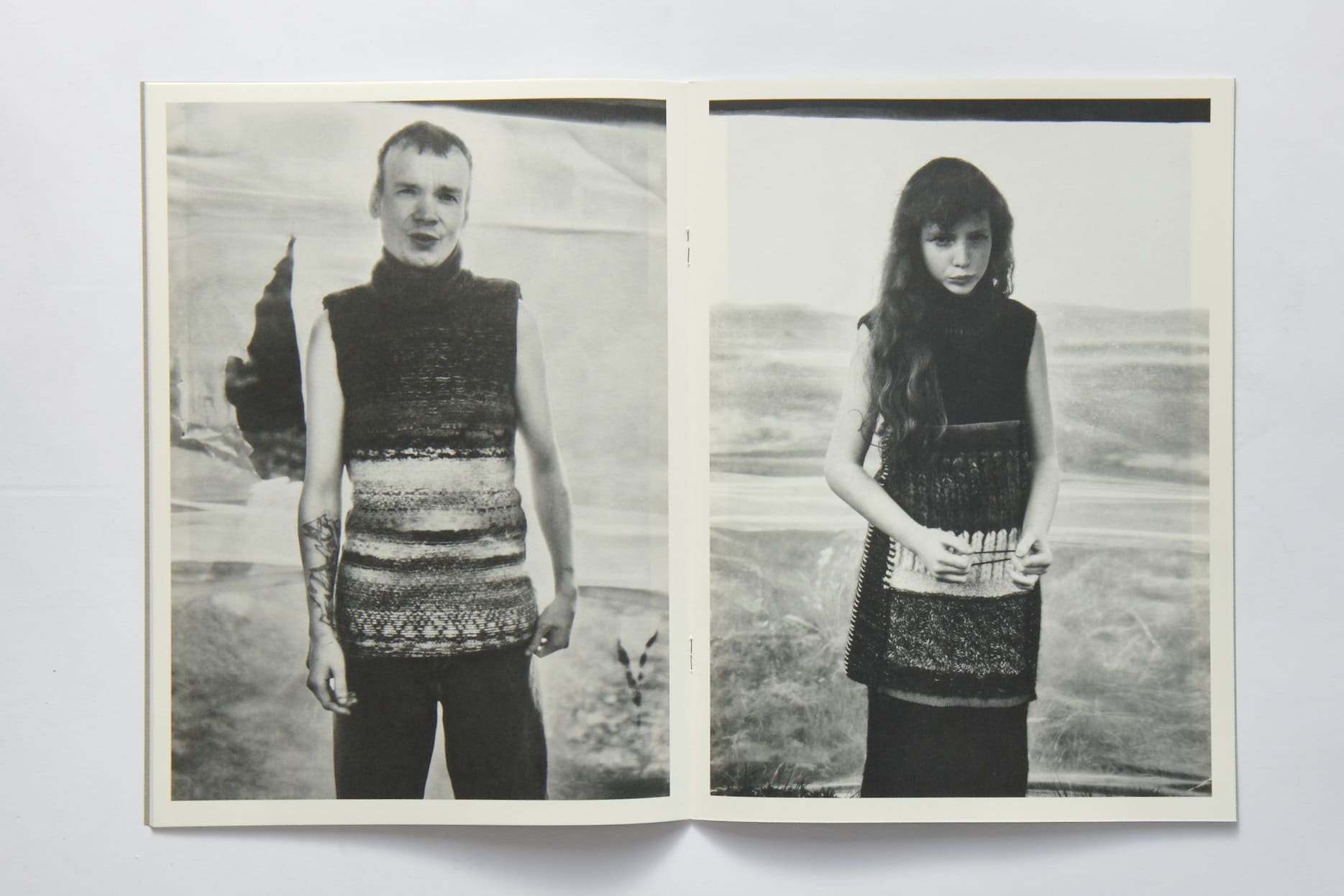
Douglas Irvine for ‘555: Revisiting The Fashion Archive of Francisco Costa’.
LATINNESS: It’s an interesting exercise to revisit your creative work and reapply your creativity in a new light. Almost as a different person entirely after so many years. I imagine it must have felt like a healing or a cathartic process, in a way.
Francisco: Totally, it’s exactly that. You just nailed it. It’s just like making peace and just being free. Freeing myself of things that I fought so much. I’m very controlling, so this is not an exercise that was pleasing to me in a sense. I love to do this, but it isn’t easy.
I thought, “What if I hate all the pictures? What if I had something to say about every picture? What then? This is an expensive project, and what if I hate everybody’s work? How I’m going to deal with this.” It was very healing with a lot of learning, very deep, but at the same time, very liberating because all the pressure was there, but not at all in the same way.
LATINNESS: Now with your mindset on sustainability and nature, it’s an interesting and beautiful message for the fashion industry– the idea of building upon what’s already created and not always focusing on deadlines and marketing strategies, as you were saying, was the case when you were at Calvin Klein. It’s about appreciating this beautiful work that fashion tends to forget so quickly. Let’s not forget about it, let’s recreate and celebrate it.
FRANCISCO: Yes, there is a celebratory aspect to it. The big idea really is how to embrace sustainability at its best. How can we take what you have and just make it great or greater?
We’ve reflected quite a bit on things that I did in the past that either I never talked about or nobody ever picked up on, but I was the first designer in the US to stop using fur. This was 20 years ago. I called PETA after my third collection at Calvin. I did a collection that was fur from beginning to end. It was fur in every single way: it was shaved, it was ruched, everything was leather, everything was fine. And I literally got sick of it at the end of the collection, I felt so, so bad, I really did. And it’s often when I am so visceral about things, and then recognize the value of it as not having any value.
So throughout my years at Calvin, I did collections that were completely upcycled. For instance, I had a Fall 2011, in which I had brought to some of the Italian knitwear manufacturers all this yarn that I had bought from mills in Scotland, from mills in northern Italy, and the intent was to really reshuffle all this old stuff, put it together, give new life and let’s do beautiful clothes. The collection was successful. It was all about the multitude of colors and this great complexity of beautiful yarns from different places.
So I was thrilled to actually have the collection shot again in Scotland. In the book, there are images of kids from this little village wearing the clothes that once belonged to Scotland– the yarns and woolens from the sheep that were once born there. Things like that I enjoy and I always did it. There was one collection that I did at this mill in Como, and I said to Filippo, who was the CEO, the owner and a genius textile person, “Filippo, let’s just go back to your stock and let’s look at what you have.” We went to this building outside the factory, and he has all this stock of crazy linens. Imagine you are going to a barn and you just see walls of gorgeous straw. Well it’s the same sensitivity as when I walked into that room; I felt like I walked into a barn on the farm and then seeing this yard, to me, it was just like straw. Just wow. So we did a collection– all gray, 65 different types of gray– and telling me, I mean, it’s not 52 shades of gray, but it was 65 shades of gray, and we just updated it with beautiful weaves that made everything slightly technica, everything had a gift to it. It was just an amazing process.
And these are the things that I did at Calvin, that, when looking at this book today, we kind of appropriated that sensibility. It was an idea of doing a book that says, “This is something that was always there and came back again.”
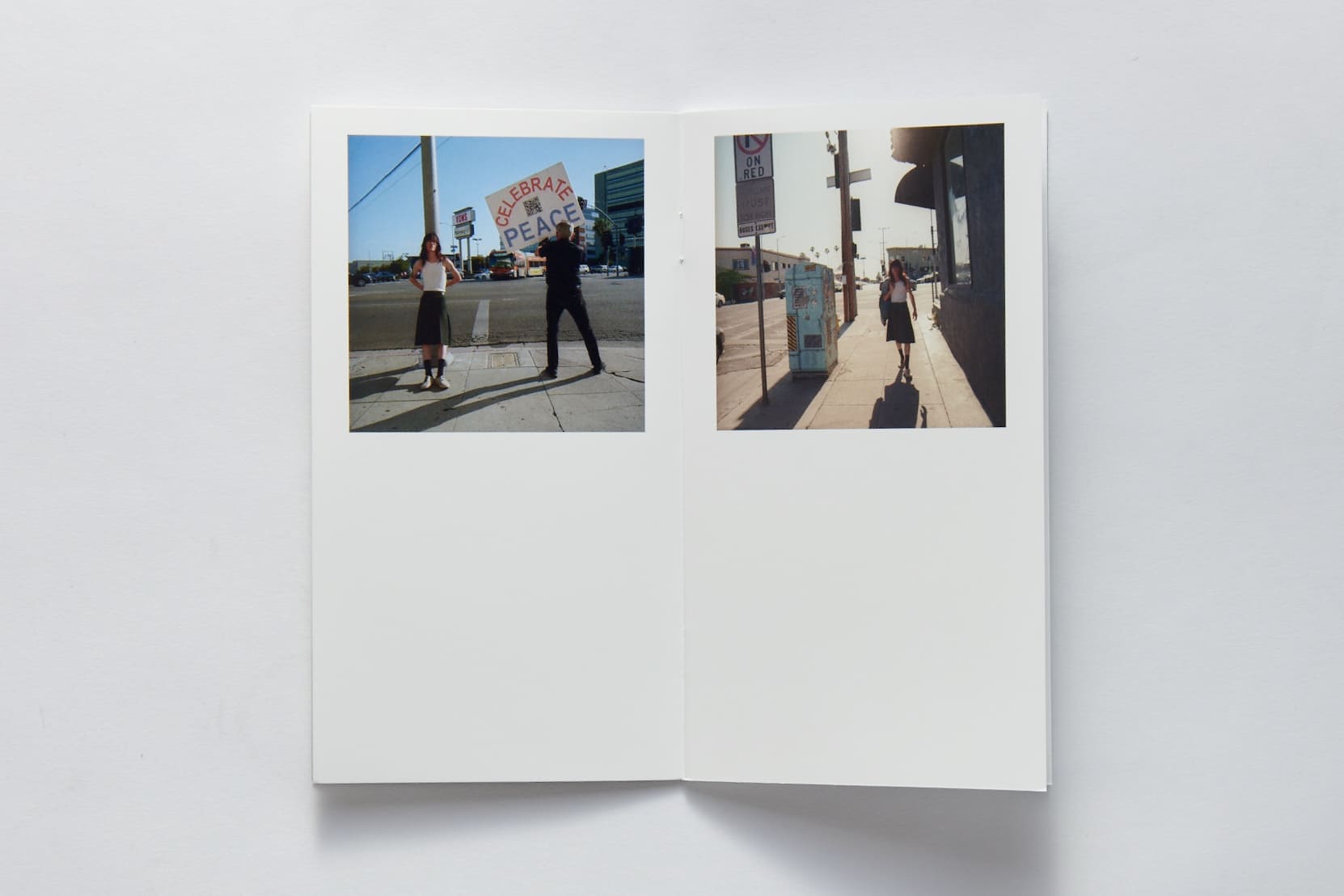
Images by Chris Coekin for ‘555: Revisiting The Fashion Archive of Francisco Costa’.
LATINNESS: Something that I loved was the use of real people as subjects for this book. Back in your days at Calvin Klein, fashion editorials and red carpets were all the rage, and celebrities were the protagonists. Now you’re going back to the basics with the longevity of the pieces and how they actually age with real people. I really love that message.
FRANCISCO: Well, thank you. To be the Creative Director at a company like that is very challenging. Calvin was a master in marketing, right? He was a marketing genius. So if you think of celebrities, you know, he did celebrities when they were like 15! I mean, Brooke Shields! He was like breaking the waves. He was already making that a thing way before anyone else thought of a celebrity on the red carpet, but I saw that it was an opportunity for me to actually tap into that and make that a very important sort of direction for the brand because we really wanted to popularize the brand in many different regions of the world, including China. So, yes, to your point, it became very obvious that my work was really catered only to celebrities because I dressed every single one of them, and it’s nice to see that exactly the opposite applies. So this is what was missing, the realness, real people. It’s what comes through here in this book.

“We came up with this idea of these found objects, a collection of little books, a collection of little memories.”
LATINNESS: The book is not exactly a book as one would imagine, but a set of books. What was the idea behind this?
FRANCISCO: There was a practicality about how this thing came together because we wanted every artist to contribute with I don’t know, six images or ten images? So Then as the work started coming in, we were like ‘How are we going to edit this?’ I thought, ‘I could never mix this together in one book.’
Every single artist has its own identity, and I felt like I had the responsibility to preserve the genuineness of every one of them. From that we came up with this idea of these found objects, these found books, a collection of little books, a collection of little memories. There’s no interference, there’s a space for every single one of them. It’s also somewhat elevated by the choice of paper. There was a shortage of paper– I don’t know if you guys remember that. So we went on a journey, and found a place that had old stock paper, and it just worked so well because every single artist has its own idiosyncratic paper that we matched to make the work even more beautiful.
It’s full of little details and emotions and distinction, where every action was meticulously thought out to make this whole experience even more beautiful.
For me it’s the most beautiful journey because it’s celebratory, it’s intimate, it’s humble, it’s simple, but it’s full of surprises. There is a fetishized precision about everything.
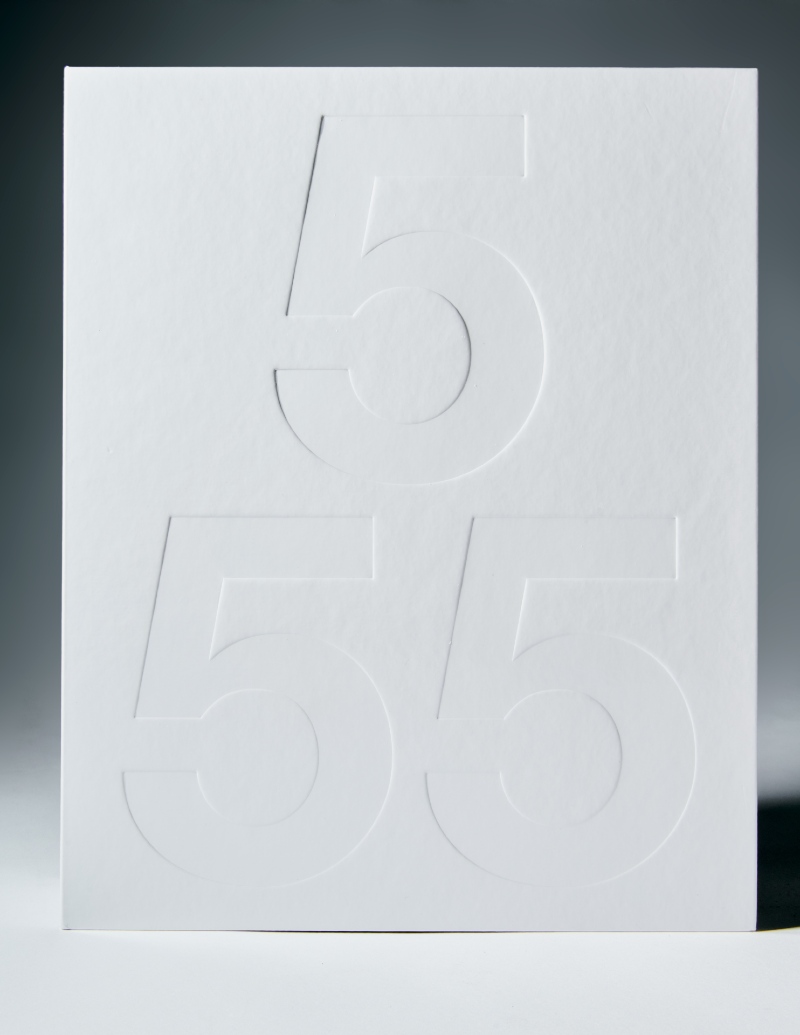
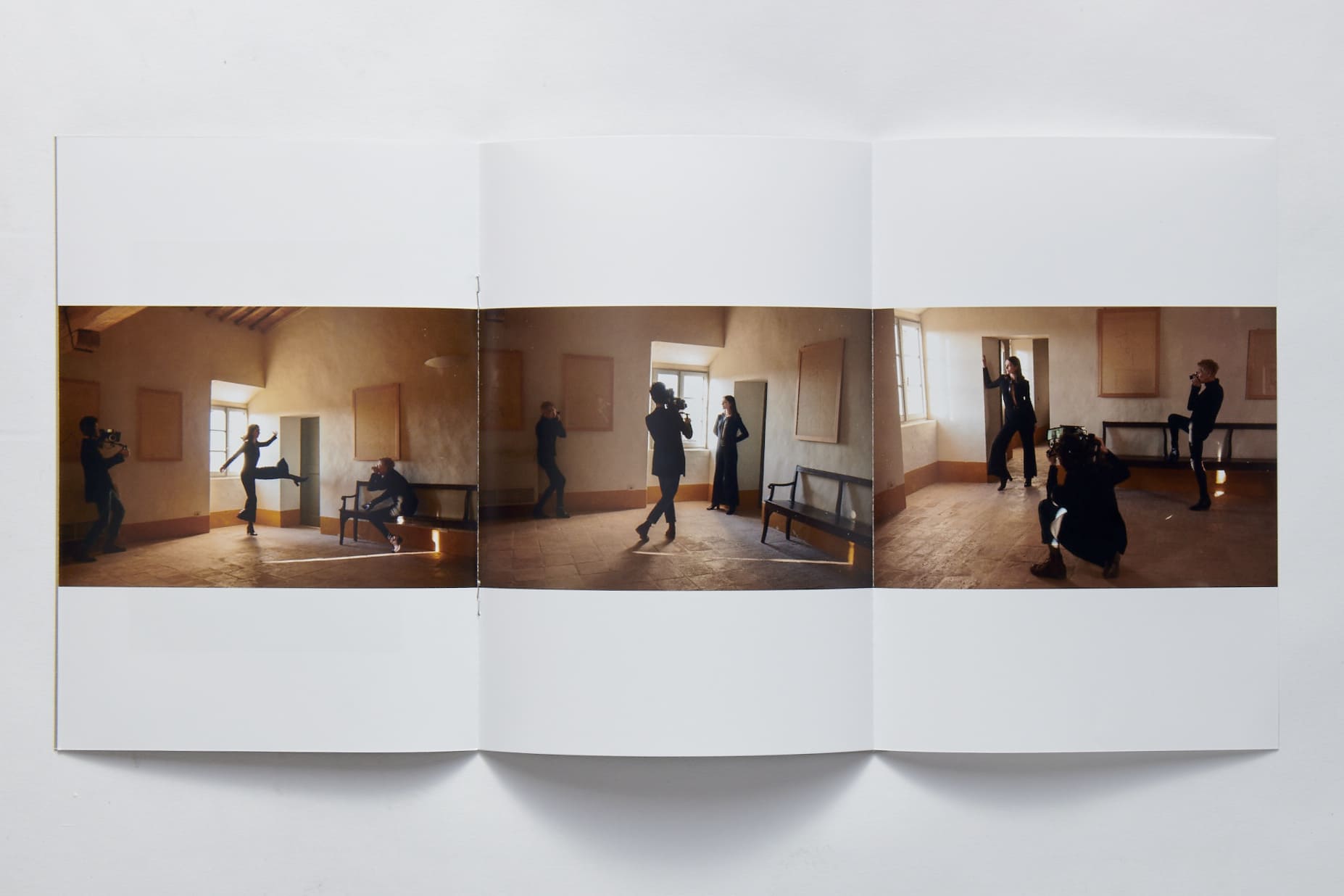
‘555: Revisiting the Fashion Archive of Francisco Costa’ by Rizzoli; images captured by Joel Meyerowitz.
LATINNESS: Amazing. The vision of a creative director as applied to a book! What is the significance of the title 555?
FRANCISCO: I’m very crazy about numbers and things like that. So I was flying from Paris, and when I picked up my phone in the middle of the flight, 5:55 showed up. I had never seen that triptych before. Usually I see 11:11, I see 2:22. I rushed to find out what it was. I’m superstitious, so I think there’s a message in everything. So if you go on Google it’ll tell you that it’s the new, it’s to some extent innovation and an angel of mutation. I did not have a name for the book, so it just felt right.
LATINNESS: Francisco, you’re a source of inspiration for all creative Latins conquering the world. Do you have any advice for younger creatives from lessons you’ve learned throughout your journey?
FRANCISCO: I think we all have to dream. As South Americans, for instance, we are born with the desire to conquer– I think it has to do with our heritage, in the way the continent was built. At the same time, we also come with a great burden of having to prove, which is what makes us all work so hard that should be translated into a dream. You have to prove nothing, but you have to have the biggest dream in the world, and you have to love it all.
I don’t make too many judgments. I follow my heart mostly so, and then I work hard to accomplish those dreams, which are often a result of being extremely curious. I love surprises and I hate surprises, but I’m always looking for the new. I’m always looking around: up, down, side, back. I’m always looking because I’m curious. I want to absorb everything. I want to be part of everything.
If you have a dream, if you have an idea, whatever you want to do, just go deep and don’t give up. Obstacles will always be there, but that’s when your creativity kicks in. You’ll always find a way. Although it seems to be impossible, you’ll always find a way.
Images courtesy of Francisco Costa.

